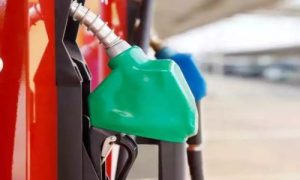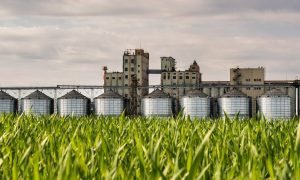Ethanol blending target of 15% a bridge too far

MUMBAI/NEW DELHI – India’s ambitious target of scaling up ethanol blending with petrol to 15% in the current ethanol supply year seems a huge ask, as the country is staring at a significant drop in sugarcane production in the sugar season that started in October.
Industry players and experts have voiced concerns that ethanol supply may fall next year, which may be a drag on the government’s blending programme for the next few years.
India plans to achieve 15% blending of ethanol with petrol in 2023-24 (Nov-Oct), 18% in the subsequent year, and finally, 20% blending by ethanol supply year 2025-26. According to Petroleum and Natural Gas Minister Hardeep Singh Puri, the country has achieved 12% ethanol blending with petrol as of Oct 31, in line with the government’s target for 2022-23.
To reduce dependence on crude oil, the government has been implementing a programme for ethanol blending with petrol throughout the country, under which oil marketing companies sell petrol blended with ethanol.
Market chatter indicates ethanol supplies to oil marketing companies may fall, which could have a negative impact on the blending targets.
“It’s difficult at this point to quantify what the total ethanol supply will be this year (2023-24),” said Uppal Shah, co-founder and chief executive officer, AgriMandi Live. “I think there will be a shortfall in ethanol supplies, and OMCs (oil marketing companies) may not get the full amount tendered by them to mills,” he said.
On Oct 21, Bharat Petroleum Corp Ltd floated tenders on behalf of oil marketing companies for supply of 8.25 bln ltr of ethanol from all sources in 2023-24.
“It’s a wait-and-watch kind of a scenario as of now, with the market waiting for the government to announce the rates for ethanol derived from sugarcane,” said Atul Chaturvedi, executive chairman of Renuka Sugars Ltd. The blending target for 2023-24 seems difficult to achieve, he added.
This year, the sugarcane crop took a significant hit due to uneven monsoon rainfall in Aug-Sep, especially in Maharashtra and Karnataka. In fact, August was the driest month in the monsoon season since 1901, according to data by the India Meteorological Department.
“As a result, the number of (sugarcane) crushing days will be lower in both of these states (Maharashtra and Karnataka), which will result in an overall reduction in ethanol production,” Shah said.
Last month, the Indian Sugar Mills Association pegged the country’s sugar output in 2023-24 at 33.7 mln tn, down from 36.9 mln tn last year. In August, the association had estimated production at 36.2 mln tn.
ISMA’s latest sugar production estimate excludes diversion of sugarcane towards ethanol production. The association had in August estimated that about 4.5 mln tn of sugar would be diverted towards the production of ethanol in Oct-Sep, compared with about 4.1 mln tn estimated to have been diverted the previous season.
With the projection of lower sugar output this year, ISMA is likely to scale down its estimate for ethanol diversion in the coming weeks.
SUGAR OR ETHANOL
With limited sugarcane available this year, competition among millers is likely to be cut-throat. Industry players say mills may prefer to produce more of the sweetener than ethanol in 2023-24.
“Sugarcane production in Maharashtra and Karnataka is seen down and millers are seeing a possibility of higher prices,” said a Kolkata-based sugar miller, on condition of anonymity. “Everything will depend on government policies and mills will have to be properly incentivised to produce ethanol, or why else would they produce it.”
Also, only sugar mills with a minimum crushing capacity of 100 kl ltr per day may be equipped to produce ethanol this year, experts say.
National Federation of Cooperative Sugar Factories Managing Director Prakash Naiknavare said this year, mills across the country might crush sugarcane for only 110–130 days, compared with 140 days last year. Crushing operations in Maharashtra and Karnataka may last for less than 100 days, Naiknavare said.
Unlike sugar prices, which vary depending on demand and supply conditions, ethanol prices are fixed by the government for each ethanol supply year starting November.
Informist had earlier exclusively reported that prices of ethanol from sugarcane by-products were likely to see a 3-5% increase in 2023-24.
It is mandated that sugar mills abide by the ethanol tenders they bid. The Ministry of Petroleum and Natural Gas is likely to release a notification regarding this later this week, according to industry sources.
“Sugar mills will be crushing only three-four months at maximum this time…and from Feb-Mar only molasses-based ethanol will be available,” said a technical manager at biofuel technology consultancy.
Experts say acquiring molasses-based ethanol may be challenging. Molasses is a by-product of the sugar refining process.
“Molasses prices are good enough to be sold in the domestic and overseas market,” said Naiknavare.
While achieving 15% blending in 2023-24 seems unlikely, India may not see any major drop from what has been achieved so far.
The government is quite vocal about the ethanol blending programme and would not want to be embarrassed, especially in the year ‘Global Biofuel Alliance’ has been launched, said Prashant Biyani, vice-president at Elara Capital.
He, however, said the growth in ethanol blending is likely to be slower going ahead.
















